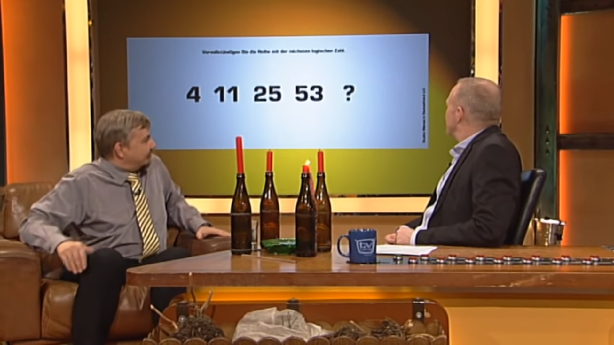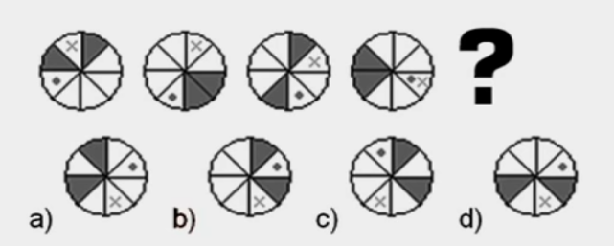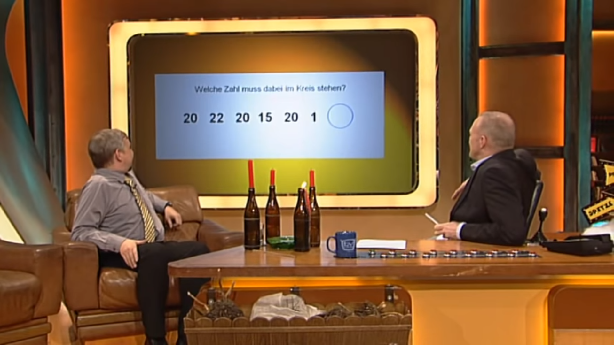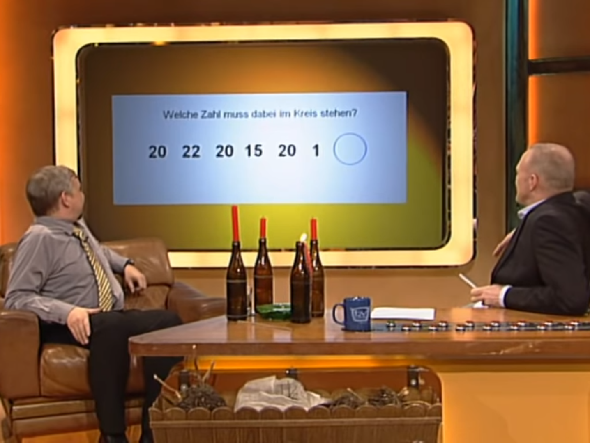A few years ago, German late-night show host Stefan Raab presented a number puzzle in his show “TV total”. It involves cryptography and should be easy to solve for readers of this blog.
German readers certainly know the late-night TV show TV total hosted by Stefan Raab, which aired from 1999 to 2015. A few days ago, I happened to watch an excerpt from a 2013 TV total episode on YouTube. This episode shows an interview between Raab and Thomas Wolf, who is described as one of the nine most intelligent people in the world. Wolf’s IQ is nearly 200, so he belongs to the Giga Society, an exclusive super-smart club.
A few non-cryptographic puzzles
In order to test Thomas Wolf, Raab presents a number of challenges, most of which are about extending a sequence of numbers or other objects. The following screenshot shows an example:

The sequence shown here is 4, 11, 25, 53, ?. The missing item is 109, because each number is derived from its predecessor by doubling it and adding 3. Here’s another one:

Can you solve this puzzle yourself?
A cryptograpic puzzle
The last challenge presented in the interview between Raab and Wolf is cryptographic in nature (which can’t be seen at first view, but becomes clear if one knows the solution):

The sequence of numbers presented is 20, 22, 20, 15, 20, 1, ?. Can a reader solve this one? Knowing that the challenge has to do with cryptography makes things easier. If you find the solution, post it in the comment section. If not, watch the video or wait until somebody else has posted it.
Follow @KlausSchmeh
Further reading: Revisited: Four unsolved crypto challenges of Germany’s federal intelligence service
Linkedin: https://www.linkedin.com/groups/13501820
Facebook: https://www.facebook.com/groups/763282653806483/



Kommentare (12)